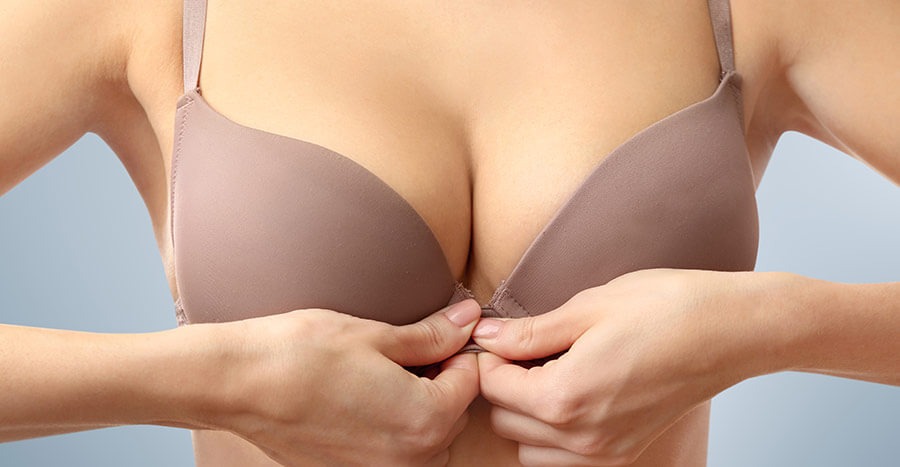Breast Enlargement/ Augmentation in Dubai
________Dr. Mohan Rangaswamy________

Breast Enlargement by Dr. Mohan | Plastic Surgeon in UAE
Breast enlargement/augmentation [BA] involves the surgical placement of an implant behind the breast to increase its volume and enhance its shape. It is the commonest female aesthetic operation in most countries. Every year, thousands of women undergo breast augmentation and feel more confident about their appearance. It has been repeatedly shown to be safe.
Breast enlargement/augmentation [BA] involves the surgical placement of an implant behind the breast to increase its volume and enhance its shape. It is the commonest female aesthetic operation in most countries. Every year, thousands of women undergo breast augmentation and feel more confident about their appearance. It has been repeatedly shown to be safe.
Who is a candidate? You may be a candidate for this procedure if:
- You feel that your breasts are too small
- One of your breasts is smaller than the other by one bra size or more
- Weight loss, pregnancy or breastfeeding has decreased the volume
- Clothes you buy fit well on the hips and are too large for the bust line
- You are fed up with padded bras and inserts.
The operation can be performed at any age once the breasts are fully developed. It is important that the patient is emotionally mature and sure about the expected outcome from the procedure.
Consultation: Your consultation will involve discussions about your expectations and what is surgically possible. A full medical history will be taken with particular emphasis on a family history of breast cancer and the result of any biopsies or mammograms. Prior to surgery, all blood thinners like aspirin should be discontinued for 7 days, smokers must quit for 2 weeks [longer the better] and no alcohol for 3 days. It is important to avoid sunburns and steam/sauna prior to surgery. You must inform your surgeon if you are planning a significant weight loss or planning to get pregnant in the future. Both these changes will alter your breast size in an unpredictable way and could affect the long term results of your breast augmentation. You should still be able to breast feed with no risk to your child.
The operation varies from patient to patient in three major ways, firstly the placement of the incision, secondly the type of implant used and thirdly the anatomical plane of implant placement. These will be discussed with you.
The type of implants used today largely contains an outer strong but flexible silicone shell with either salt water or soft silicone gel inside; the gel implants are preferred today and they are all cohesive gel (so called gummy-bear implants, in case you are looking for that word). Implants may be round or tear-drop shaped and some of them carry limited warranties as well.
We also offer the new light weight ‘permanent’ implant’ which also has a different ‘feel’ to it.
Choice of Implants: This is a crucial part of consultation and hence a second free consultation is offered exclusively for sizing. You will be asked to bring an unpadded bra and tight fitting T shirt or tank-tops to check out different sizes and implants in front of a mirror. Keep in mind that the dimenstions of the bony chest and several other parameters need to be considered in choosing the right size and style for you. Pre-conceived volumes and “same volume as my friend had” do not work, it has to be highly individualized.
Surgery: Commonly performed under general anesthesia, it can also be done under local anesthesia with sedation. Long acting local anesthesia is given anyway in all cases to control postoperative pain. Through a suitable incision, the surgeon makes a pocket in the chosen plane and checks to see if the dimensions are adequate. Careful attention is given to stop all bleeding and the space is washed with sterile saline. The implant is then inserted, checked and finally the incision is securely closed in 2 or 3 layers. The new breasts are supported in a surgical bra. The operation takes 90 to 120 minutes.
Post-surgery: Almost all patients leave the hospital on the same day. Full doses of pain medications are given to take home, it is important to take them at prescribed intervals even if the pain is minimal. Antibiotics may be prescribed for 5 days. Dr. Mohan does not use drains in most cases. Sutures are self-dissolving. You may have some bruising initially but this will resolve in a couple of weeks. Soreness may be experienced up to 2 weeks but usually for much less. This depends on the plane of placement; pain is more if the implant is behind the muscle. It will be possible to return to your job within a few days, but vigorous exercises especially those involving the arms should not be done for three weeks.
Complications: The subject of risks and potential complications are best discussed on a personal basis with your surgeon. Some of the things which will be discussed with you include reactions to anesthesia, blood accumulation (which may need to be drained surgically), and infection. Although rare, it may be necessary to remove the prosthesis in the event of infection. Nipple sensation may be altered temporarily by the operation and in rare cases complete loss of sensation is possible.
When an implant is inserted into the body a healing response causes afibrous capsuleto develop around the implant. This capsule occurs in all cases but to varying degrees. In most patients, it causes no problem whatsoever but if it tightens, it compresses the implant and the patient can feel it as hardening of the implant. Surgery may be required in extreme cases to remove the capsule or to make bar-be-cue type cuts in the capsule to relax it.
Breast implants generally have a manufacturer’s recommendation to be changed every 10 years. Changing an implant is extremely easy. A commonly asked question is whether it is safe to fly at 35,000 feet with implants – and the answer is YES!
Results: The results of this operation are very pleasing and except in the event of implant failure (requiring surgical replacement with a new implant) will be long lasting. Over the years, gravity and the effects of aging will inevitably act on the breast and alter the shape. If you become dissatisfied with the appearance, you may opt to undergo a breast lifting procedure to restore the more youthful contour. You must remember that following this operation, a liaison with your plastic surgeon should continue with regular interval follow-up care. You will be encouraged to undergo routine mammographic evaluations at the frequency recommended for your age group.
Refinements: As you have come to expect there are some refinements here too. Dr. Mohan uses the‘retro-fascial’ or sub-fascaial plane which combines the best features of under the gland and under the muscle planes, to give great results. Particular care is taken to respect the nerve supply to minimize the risk of numbness of the nipple. Drains are not used so pain is less and recovery is quicker. Simultaneous fat grafting can be done to improve cleavage and upper fullness (composite augmentation).

